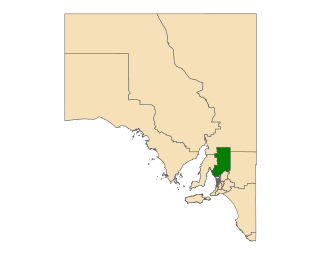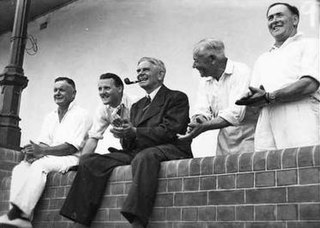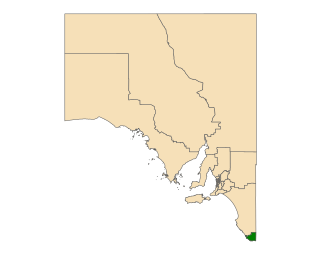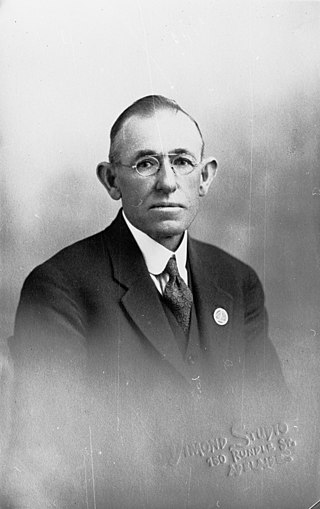Related Research Articles

The 1996 New Zealand general election was held on 12 October 1996 to determine the composition of the 45th New Zealand Parliament. It was notable for being the first election to be held under the new mixed-member proportional (MMP) electoral system, and produced a parliament considerably more diverse than previous elections. It saw the National Party, led by Jim Bolger, retain its position in government, but only after protracted negotiations with the smaller New Zealand First party to form a coalition. New Zealand First won a large number of seats—including every Māori electorate, traditionally held by Labour. Its position as "kingmaker", able to place either of the two major parties into government, was a significant election outcome.
Since 1970, the South Australian House of Assembly — the lower house of the Parliament of South Australia — has consisted of 47 single-member electoral districts consisting of approximately the same number of enrolled voters. The district boundaries are regulated by the State Electoral Office, according to the requirements of the South Australian Constitution and are subject to mandatory redistributions by the South Australian Electoral Districts Boundaries Commission in order to respond to changing demographics.

Hammond is a single-member electoral district for the South Australian House of Assembly. It is named after Ruby Hammond, the first indigenous woman to stand for the Federal Parliament. Hammond is a rural electorate east and south-east of Adelaide, covering 18,091 km2 (6,985 sq mi) in the east and upper south-east of the state, and takes in the towns of Callington, Cambrai, Coomandook, Karoonda, Langhorne Creek, Mannum, Nildottie, Peake, Pinnaroo, Purnong and Tailem Bend.

Frome is a single-member electoral district for the South Australian House of Assembly. It is named after Edward Charles Frome, the third surveyor-general of South Australia. The electorate stretches north-eastwards from the Gawler River and Gulf St Vincent in the south, and includes many of the agricultural areas of the Clare and Gilbert Valleys. It covers a total of 12,921 km2 (4,989 sq mi) and takes in the towns of Auburn, Clare, Mintaro, Port Broughton, Saddleworth, Snowtown and Riverton. Prior to the 2020 redistribution, its main population centre was Port Pirie, since transferred to the Stuart.

The Electoral district of Perth is a Legislative Assembly electorate in the state of Western Australia. Perth is named for the capital city of Western Australia whose central business district falls within its borders. It is one of the oldest electorates in Western Australia, with its first member having been elected in the inaugural 1890 elections of the Legislative Assembly.
Murdoch was an electoral district of the Legislative Assembly in the Australian state of Western Australia. It existed from 1977 to 1989 and again from 1996 to 2008.

Collie-Preston is a Legislative Assembly electorate in the state of Western Australia. While the seat was known as Collie for just over a century of its existence as an electorate, the seat was known as South West Mining from 1901 to 1904, and Collie-Wellington from 2005 to 2008. It is named for the South West coal mining town of Collie. While historically a very safe seat for the Labor Party, redistributions in 1988 and 2007 due to increases in the quota for country seats which had historically been malapportioned resulted in the seat incorporating surrounding rural shires which were hostile to Labor and thereby becoming more marginal.

Murray-Wellington is an electoral district of the Legislative Assembly in the Australian state of Western Australia. The seat's current member is Labor MLA Robyn Clarke.

Tom Cleave Stott CBE spent 37 years as an independent member of the South Australian House of Assembly, from 1933 to 1970. He served as Speaker of the House from 1962 to 1965 for the Tom Playford LCL government and 1968 to 1970 for the Steele Hall LCL government, both times in exchange for his confidence and supply vote to form minority governments.

Mount Gambier is a single-member electoral district for the South Australian House of Assembly. It covers the far south-east corner of the state containing the City of Mount Gambier and District Council of Grant local government areas. It is centred on the city and extinct volcano of Mount Gambier.
Norwood is a former electoral district of the House of Assembly in the Australian state of South Australia. It was a 14.2 km² inner-urban electorate in Adelaide and was named after the inner-eastern suburb of Norwood. In its final configuration, the seat also included the suburbs of Beulah Park, College Park, Evandale, Firle, Hackney, Joslin, Kent Town, Marden, Maylands, Payneham South, Royston Park, St Morris, St Peters, Stepney, Trinity Gardens and Vale Park, as well as parts of Kensington, Klemzig and Payneham.

Edward John Craigie was a Single Tax League member for the South Australian House of Assembly seat of Flinders from 1930 to 1941.

The 1968South AustralianState election was held in South Australia on 2 March 1968. All 39 seats in the South Australian House of Assembly were up for election; 38 of the 39 contests were won by candidates from Australia's two major political parties. The incumbent Australian Labor Party and the Liberal and Country League both won 19 seats. The sole independent candidate to win a race, Tom Stott of the Ridley electorate, joined with the LCL's 19 seats to form a coalition government that held a 20 to 19 majority, thus defeating the Dunstan Labor government.

Wairarapa is a New Zealand parliamentary electorate. It was first created in 1858 and existed until 1881. It was recreated in 1887 and has since existed continuously. In the early years, the electorate was for a time represented by two members. Wairarapa has been held by Kieran McAnulty since the 2020 election.

Waitaki is an electorate for the New Zealand House of Representatives that crosses the boundary of North Otago and South Canterbury towns on the East Coast of the South Island. The electorate was first established for the 1871 election that determined the 5th New Zealand Parliament. It has been abolished and re-established several times and in its early years was a two-member electorate for two parliamentary terms. The current electorate has existed since the 2008 election and is held by Jacqui Dean of the National Party.

Onehunga, initially with the formal name of Town of Onehunga, is a former New Zealand parliamentary electorate in the south of the city of Auckland. Between 1861 and 1881, and between 1938 and 1996, it was represented by seven Members of Parliament. It was a stronghold for the Labour Party.
Clutha was a New Zealand parliamentary electorate from 1866 to 1996.

State elections were held in South Australia on 19 March 1938. All 39 seats in the South Australian House of Assembly were up for election. The incumbent Liberal and Country League government led by Premier of South Australia Richard L. Butler defeated the opposition Australian Labor Party led by Leader of the Opposition Andrew Lacey.
Murray is a defunct electoral district that elected members to the House of Assembly, the lower house of the bicameral legislature of the Australian state of South Australia. The electorate, incorporating part of the River Murray, was rural in nature, with Mannum the only large town within its boundaries. From its establishment to the 1938 state election, Murray was a three-member electorate, but was made a single-member electorate afterwards, as part of a system of electoral malapportionment known as the "Playmander". In both incarnations it elected candidates from both major parties as marginal and safe seat holders at various times. If just 21 LCL votes were Labor votes in Murray at the 1968 election, Labor would have formed majority government. Murray was one of two gains in 1968 that put the LCL in office. The electorate was abolished prior to the 1985 election, with its territory now forming part of the districts of Hammond, Kavel, and Schubert. In total, 24 people represented Murray between 1902 and 1985, with its most notable member being Thomas Playford IV, who later served as Premier of South Australia.

The Liberal Party of Australia , commonly known as the South Australian Liberals, is the South Australian Division of the Liberal Party of Australia. It was formed as the Liberal and Country League (LCL) in 1932 and became the South Australian Division of the Liberal Party when the Liberal Party was formed in 1945. It retained its Liberal and Country League name before changing to its current name in 1974. It is one of two major parties in the bicameral Parliament of South Australia, the other being the Australian Labor Party. The party has been led by Leader of the Opposition David Speirs since the 2022 state election after a one-term government.
References
- ↑ H. J. Finnis (1967) 'Ridley, John (1806 - 1887)', Australian Dictionary of Biography, Volume 2, Melbourne University Press.
- ↑ Hetherington, R. & Reid, R. (1962) The South Australian Elections 1959, Rigby.
- ↑ Jennings, R. (1992) Barnacles and Parasites, Nesfield Press, Adelaide. ISBN 978-0-9599230-4-9.
- ↑ Jaensch, D. (1977) The Government of South Australia, University of Queensland Press, St Lucia, ISBN 0-7022-1352-7.
- ↑ South Australian State Electoral Office (1995), "Statistical Returns for General Elections, 11 December 1993", pp. 158, 194.